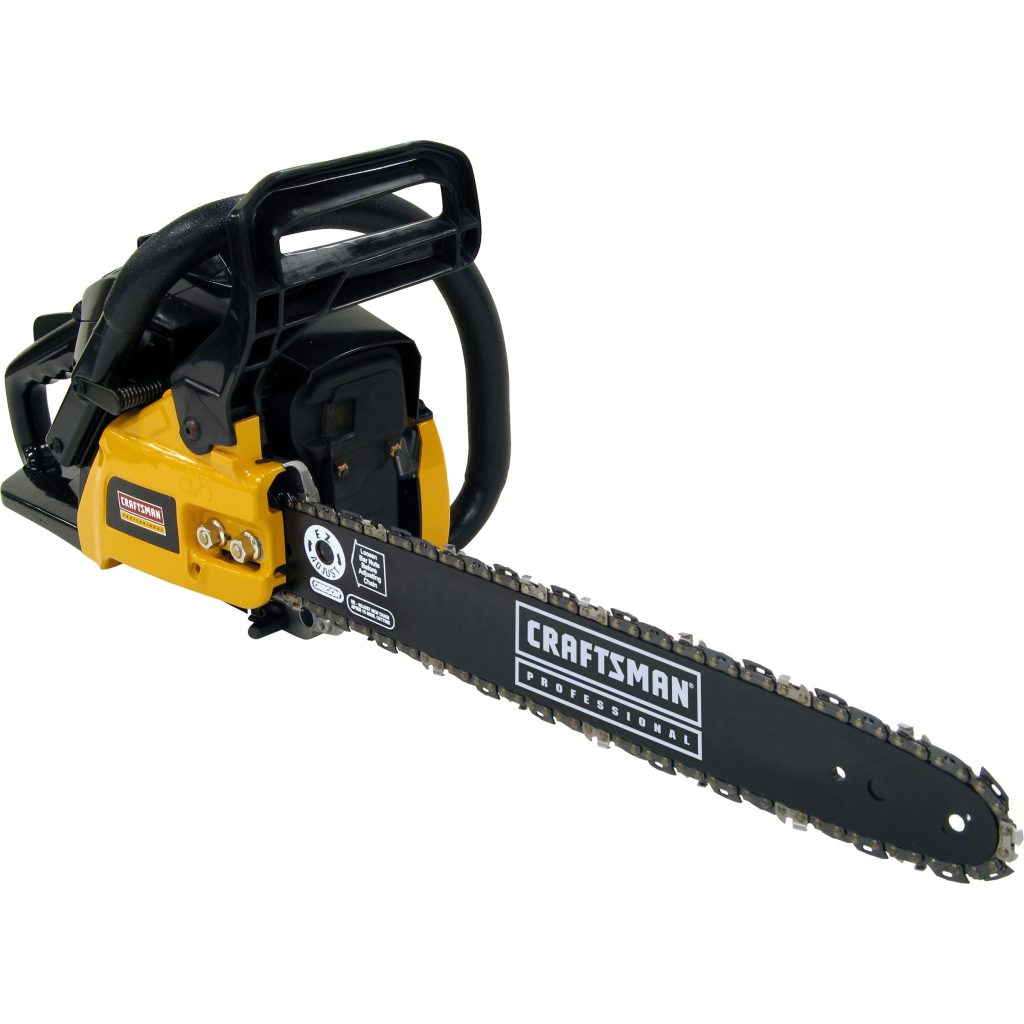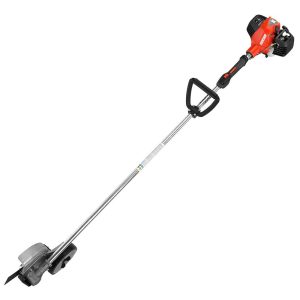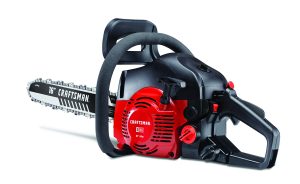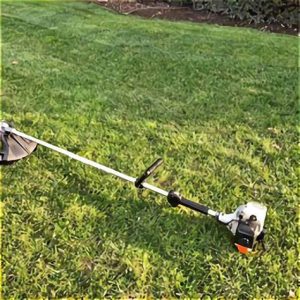Craftsman Chainsaw Requires the Choke to Be Engaged (7 Reasons)
After getting the chainsaw going with the choke on, you find that it won’t stay running except in full or partial choke.
Choking the engine of a Craftsman chainsaw is the only way to get it to run when the fuel/air mixture is off.
The fuel could be stale, the fuel line could be damaged or clogged, the fuel filter could be clogged, the fuel vent could be blocked, the carburetor gasket could be leaking, or the carburetor could simply be dusty. The chainsaw’s carburetor may also need adjusting.
Always remove the spark plug boot from the chainsaw before servicing it. You must wait until the engine has cooled and all moving parts have stopped.

When troubleshooting, repairing, or using a piece of equipment, be sure to first read and follow all safety instructions found in the manual. If you don’t feel confident in your ability to conduct the repair safely on your own, it’s best to call in an expert.
Table of Contents
This is why Craftsman Chainsaws Only Run With the Choke On
Using Stale Fuel in a Craftsman Chainsaw
The formation of a fuel limitation in your Craftsman chainsaw is typically the result of using old gas.
If you’re trying to get by on less fuel, you might need to utilize the choke to restrict airflow into the engine. The proper gas-to-air ratio for combustion will then be restored.
Implications of using outdated fuel:
- Water is drawn into the fuel system by ethanol (included in most gas).
- Over time, the fuel begins to separate into water and ethanol.
- Collects a layer of varnish and becomes sticky.
- Causes gasoline filter problems.
- Degrades gasoline parts.
If the gas in your chainsaw has been sitting for a while, you should replace it with new gas and oil.
To aid in cleaning out the fuel system and decreasing moisture, adding a fuel stabilizer, such as Sea Foam or STA-BIL, is recommended.
Start the chainsaw and let it run for several minutes after refilling the tank with new fuel and a stabilizer mix to push the treated fuel through the chainsaw and break up the gummy buildup.
Here are some ways to lessen the impact of fuel:
- Fuel having an octane value of 87 or higher is recommended.
- Don’t fill up with gas that has an ethanol percentage more than 10%.
- Craftsman 2-cycle chainsaws require gasoline to be mixed with premium 2-cycle oil at a ratio of 50:1.
- Don’t keep fuel in a damp area.
- Use the fuel up within 30 days, before it starts to degrade, or add a fuel stabilizer to extend its shelf life.
Craftsman Chainsaw with Clogged Fuel Filter
To prevent debris and other impurities from entering the fuel system, a fuel filter is installed. Your Craftsman chainsaw’s fuel filter is housed in the gasoline tank.
The fuel line has a little cylinder-shaped attachment. A clogged filter is the result of neglecting to have it cleaned on a regular basis. The gasoline filter’s flow rate will be decreased as a result.
If there isn’t enough gas to properly combine with the air, you may need to partially engage the choke and run the chainsaw that way.
Fuel filter replacement for Craftsman:
- Before removing the fuel tank cap, make sure to wipe down the area around it to remove any potential contaminants.
- Before replacing the fuel filter, make a mental note of where the old one was located inside the fuel tank.
- Remove the filter from the aquarium. You can do this with a piece of clean bent wire or a pair of needle-nose pliers.
- You need to replace the fuel filter in the fuel line, so take it out.
- Reinsert the filter into the fuel tank.
- The gas cap should be replaced.
Craftsman Chainsaw Fuel Line Leak or Clog
If the fuel line is clogged, limiting adequate fuel flow, or if air is entering the fuel system via a puncture in the fuel line, you may need to engage the choke.
If there is a blockage in the gasoline line, it must be cleared. To accomplish this, the chainsaw’s fuel line must be disconnected. To remove the obstruction, spray carburetor cleaning into the line. The next step is to use compressed air to blow the debris out of the pipe.
After the obstruction is gone, the line should be put back in place. If the gasoline line is dry and cracked and you are unable to access it, you should get a new one.
Check for a hole in the line that would allow air to enter the fuel system and force the use of the choke by adding air to the cylinder.
Craftsman Chainsaw with Blocked Fuel Vent
A Craftsman chainsaw will have a little circular vent. Air must be able to flow via this vent in order to enter the tank during fuel consumption and exit the tank during refueling.
A vacuum form inside the gasoline tank when the tank is unable to vent, preventing fuel from escaping. As a result, the carburetor will receive less fuel.
To check if the fuel tank’s vent is blocked:
- Check the vacuum pressure with a gauge. Follow these instructions in place of a gauge.
- Prepare a flat surface for the chainsaw.
- Get the saw going and make sure the choke is turned all the way off.
- If it starts to run slowly, try releasing some air from the fuel cap.
- If the engine improves after you remove the cover, the fuel tank vent is likely blocked.
Fix a clogged fuel tank hose or vent. A fuel tank vent, often a short cylinder-shaped element, is welded into the chainsaw body of most Craftsman models right in front of the handle.
Faulty Craftsman Chainsaw Carburetor Gasket
The gasket that seals the area behind the carburetor can wear out over time, allowing air to leak into the system. When there is an excessive amount of air compared to gasoline in a cylinder, the engine of a Craftsman will begin to run lean.
Carefully dismantle the carburetor by releasing its connections and loosening its fasteners. The gasket and carburetor must be taken off. Replace the gasket on the carburetor.
Check the carburetor before putting it in. While you have the chainsaw apart, you could give it a good cleaning.
The Craftsman Chainsaw’s Filthy Carburetor
The carburetor is a part of your Craftsman chainsaw that controls the ratio of fuel to air during combustion.
If the gasoline pathways in the carburetor get clogged with varnish and deposits, the device will no longer be able to fulfill its intended purpose.
You should be able to clean your carburetor if you have some mechanical aptitude. Remove deposits from old fuel by disassembling the carburetor and cleaning it using carburetor cleanser.
After cleaning, if the carburetor still doesn’t work, you may need to have it rebuilt or get a new one.
A Craftsman Chainsaw’s Carburetor Requires Fine-Tuning.
Carburetor fine-tuning may be required to achieve the desired variation in idle and maximum RPMs. The engine’s requirement for the choke could be a result of it running too lean.
The carburetor features a set of adjustment screws for just such a purpose. These screws are located on the side of the chainsaw, close to where you’ll pull the starter rope.
The screws are labeled with the speeds they control; “L” means low, “T” means idle, and “H” means high. Before tinkering with the chainsaw’s carburetor, let it run for a few minutes to get it up to operating temperature.
Make sure the air filter and air vents are clean before attempting to adjust the carburetor.
How to fine-tune the carburetor on a Craftsman chainsaw:
- First, adjust the L Screw so that the chainsaw runs smoothly at idle. To do this, turn the screw clockwise until the chainsaw cuts out, then slowly in the opposite direction. Maintain a consistent throttle position as the engine revs up.
- Make fine tuning adjustments until you achieve optimal performance.
- To prevent the chain from slacktening while idle, adjust the T screw. To adjust the T screw properly, crank it clockwise until the chain barely wiggles. When the chain no longer moves, turn the screw counterclockwise.
- The H screw is used to fine-tune the air/fuel ratio at high RPMs. Without applying too much force, turn the screw counterclockwise until it stops. It’s expected to get increasingly slow. To get the engine running smoothly, spin the screw slowly in the clockwise direction. Accelerate smoothly by pressing the throttle. Avoid running at maximum RPMs without proper adjustment, since this could cause engine damage.
The carburetor on many chainsaws has a limiter cap so the operator can’t turn it all the way. The carburetor on some chainsaws can only be adjusted with specialized equipment.
Contact your local Craftsman repair shop if you continue to experience carburetor issues and are unable or unclear how to adjust it.







